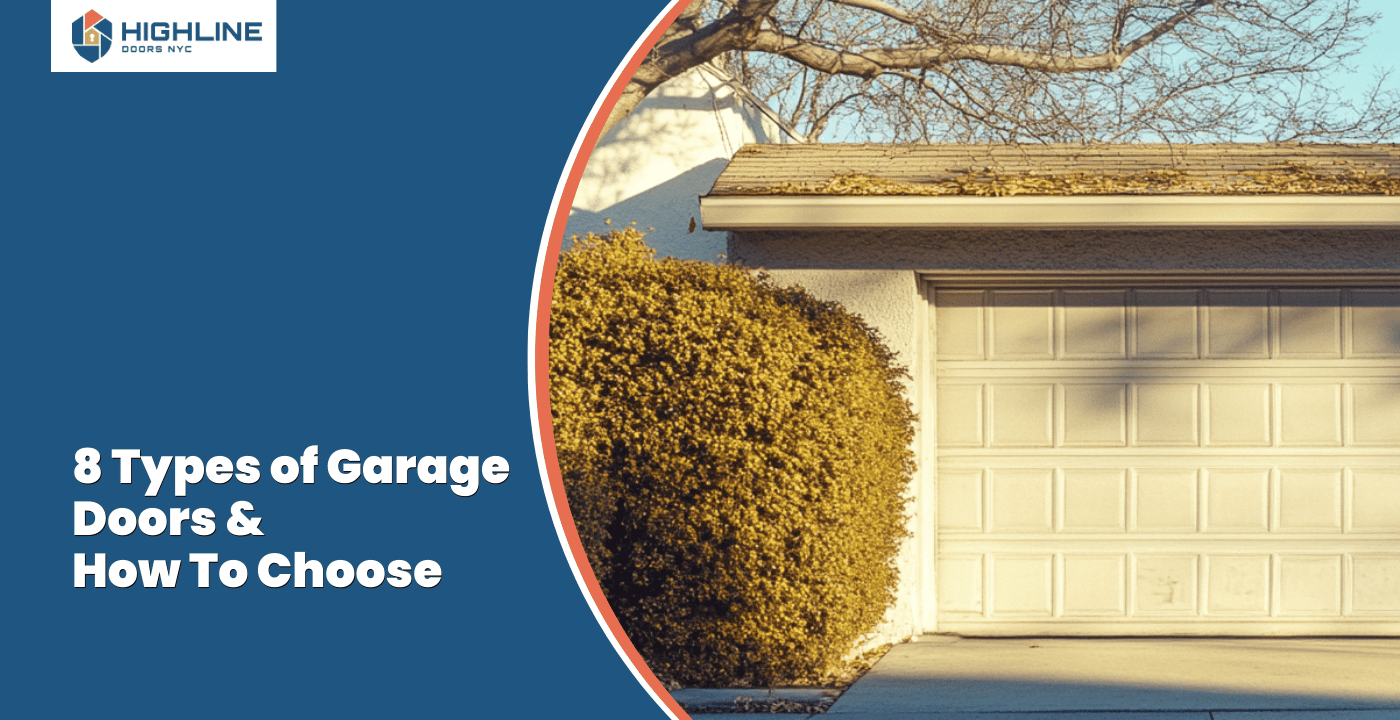Not sure what garage door style works for your space? With so many options out there—some sleek, some stubborn—it’s easy to get overwhelmed or fall for looks that don’t hold up.
But your garage door isn’t just a backdrop; it’s part of how your home lives and breathes.
We’ll break down 8 garage door types and how to choose the right one.
Key Notes
- Sectional doors offer the best balance of affordability, space-saving design, and automation options.
- Consider available space – some doors need swing room, others need ceiling clearance.
- Insulation values matter significantly in extreme climates; look for R-12 or higher.
- Door material affects both maintenance needs and long-term durability.
Different Styles of Garage Doors
Garage doors are no longer just functional; they’re an architectural statement, and we find many homeowners are treating garage doors like front doors in terms of design priority.
But while curb appeal matters, so does function, space, durability, and how it opens.
Whether you’re building, renovating, or upgrading, understanding the different types of garage doors is the first step toward making a smart decision.
Overview: Garage Door Options
| Garage Door Type | Compact Overhead | Low Maintenance | High Design Value | Manual Friendly |
|---|---|---|---|---|
| Sectional | ✔️ | ✔️ | ❌ | ✔️ |
| Roll-Up | ✔️ | ✔️ | ❌ | ❌ |
| Side-Hinged | ❌ | ✔️ | ✔️ | ✔️ |
| Tilt-Up Canopy | ❌ | ✔️ | ❌ | ✔️ |
| Tilt-Up Retractable | ❌ | ✔️ | ✔️ | ❌ |
| Glass & Aluminum | ❌ | ✔️ | ✔️ | ❌ |
| Slide-to-Side | ✔️ | ✔️ | ❌ | ✔️ |
| Pivot | ❌ | ✔️ | ✔️ | ❌ |
1. Sectional Garage Doors
This is the standard for most suburban homes across North America. Sectional garage doors are made up of horizontal panels hinged together. They slide up and overhead using a track system and roll into the ceiling.
They’re compatible with automatic openers, can be insulated, and come in various materials, like steel, wood or composite.
Pros
- Easy to automate
- Space-saving design
- Insulated options
Cons
- Hinges and rollers need maintenance
- Not the most unique look
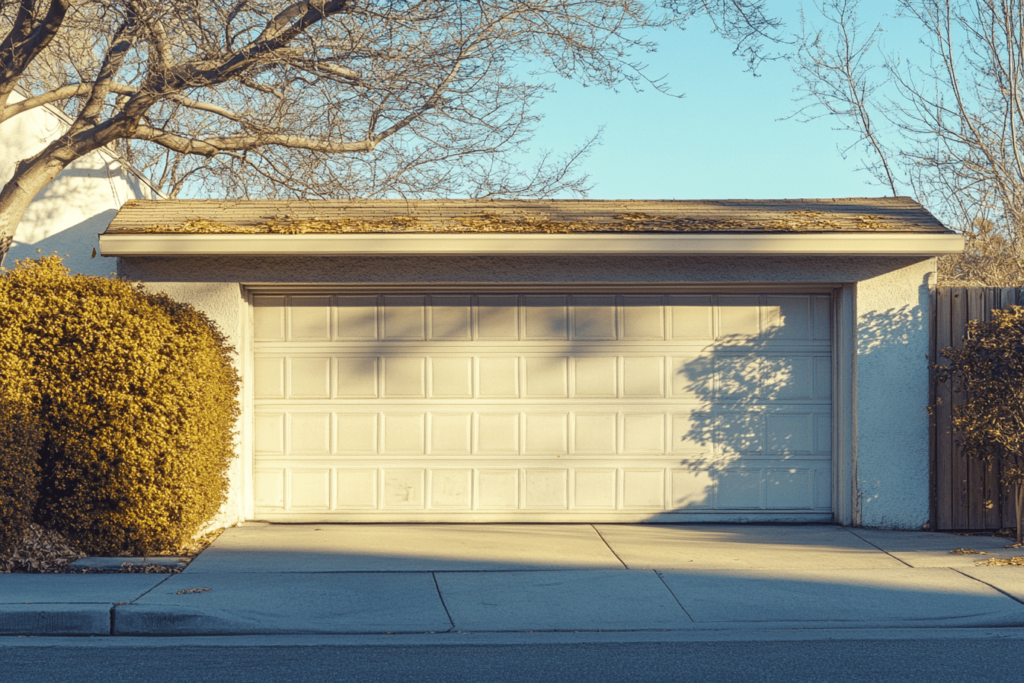
2. Roll-Up Garage Doors
Often seen in commercial buildings, these doors are built to last. Roll-up garage doors use narrow steel slats that coil tightly into a drum above the opening.
Some residential builds are now incorporating these for a minimalist, industrial vibe.
Pros
- Takes up minimal ceiling space
- Extremely durable
- Low maintenance
Cons
- Expensive
- Industrial look isn’t for everyone
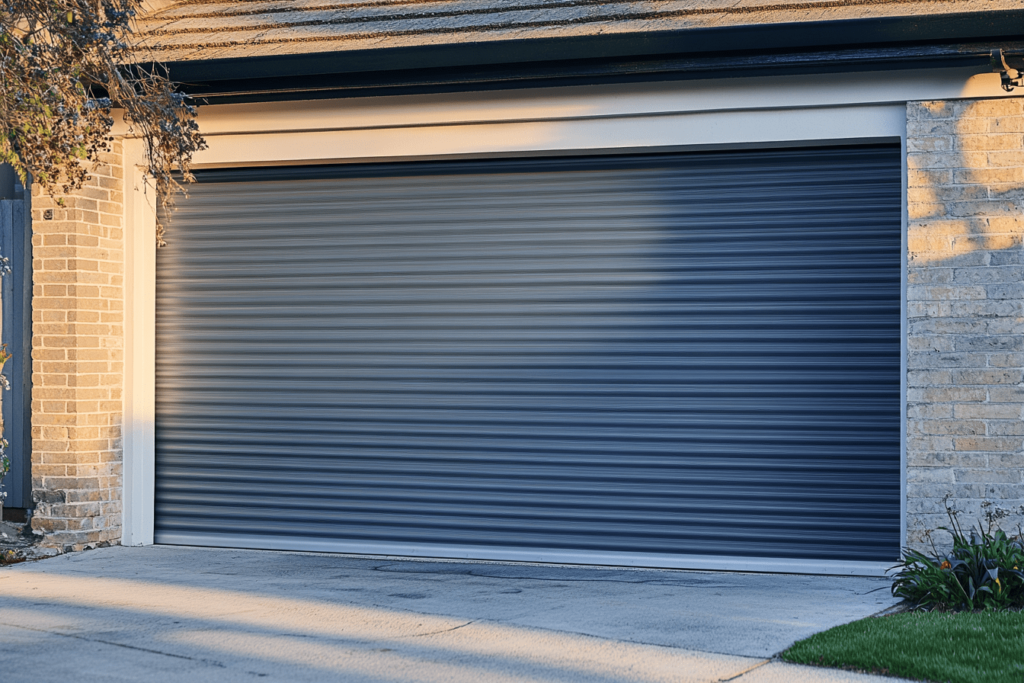
3. Side-Hinged Garage Doors
Think of barn doors that swing open from the center on hinges. Also known as garage doors that open out, they’re a nod to older garages and carriage-style doors.
There are no tracks, no lifting, just good old-fashioned swing.
Pros
- Easy manual operation
- No ceiling tracks needed
- Vintage aesthetic
Cons
- Needs clearance in front
- Lower security than sectional types
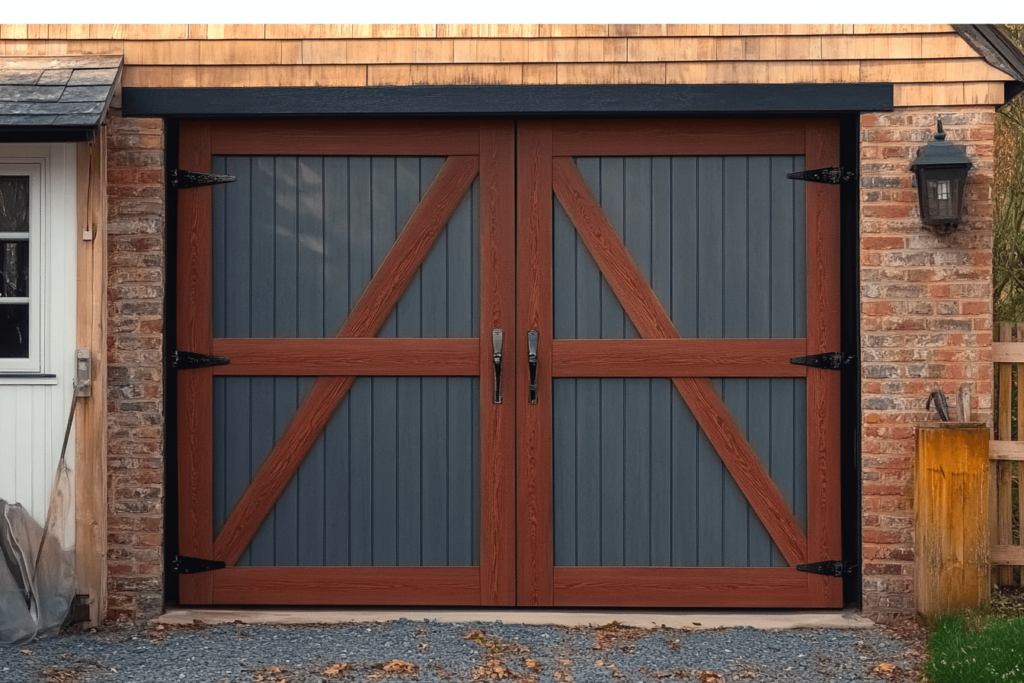
4. Tilt-Up Canopy Garage Doors
Tilt-up or up-and-over canopy garage doors are a single, solid panel that tilts outward and upward, creating a canopy when open.
It doesn’t retract fully into the garage, so part of the door sticks out when open.
Pros
- Fewer moving parts
- Simple construction
- Affordable
Cons
- Needs clearance outside the garage
- Partial ceiling obstruction
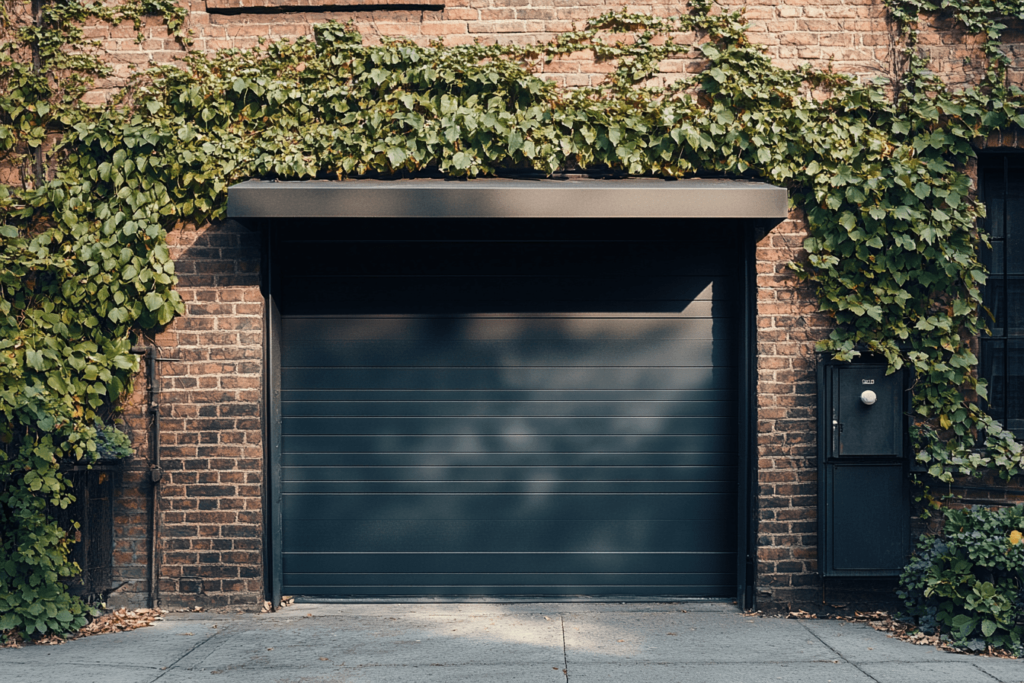
5. Tilt-Up Retractable Garage Doors
This option blends the simplicity of a solid one-piece door with the convenience of retractable motion.
It uses more hardware and occupies more space inside, but you get a cleaner, flush finish when open, which is ideal if you value aesthetics without compromising strength.
Pros
- Smooth operation
- Clean design
- Sturdy
Cons
- Takes up ceiling space
- More expensive than canopy-style
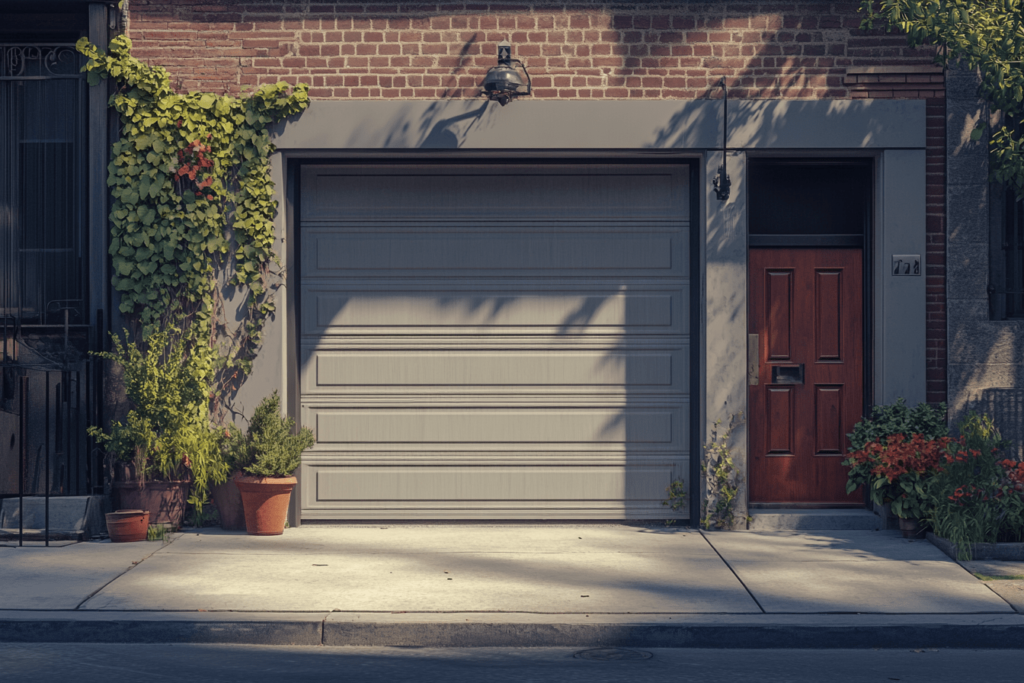
6. Glass & Aluminum Garage Doors
If you’re keen to make a bold architectural statement, glass and aluminum garage doors offer a striking blend of style and transparency.
They’re especially useful for garages that double as workshops or studios where natural light is a plus.
Pros
- Sleek, high-end look
- Allows natural light
- Rust-resistant materials
Cons
- Poor insulation unless upgraded
- Privacy concerns
- High cost
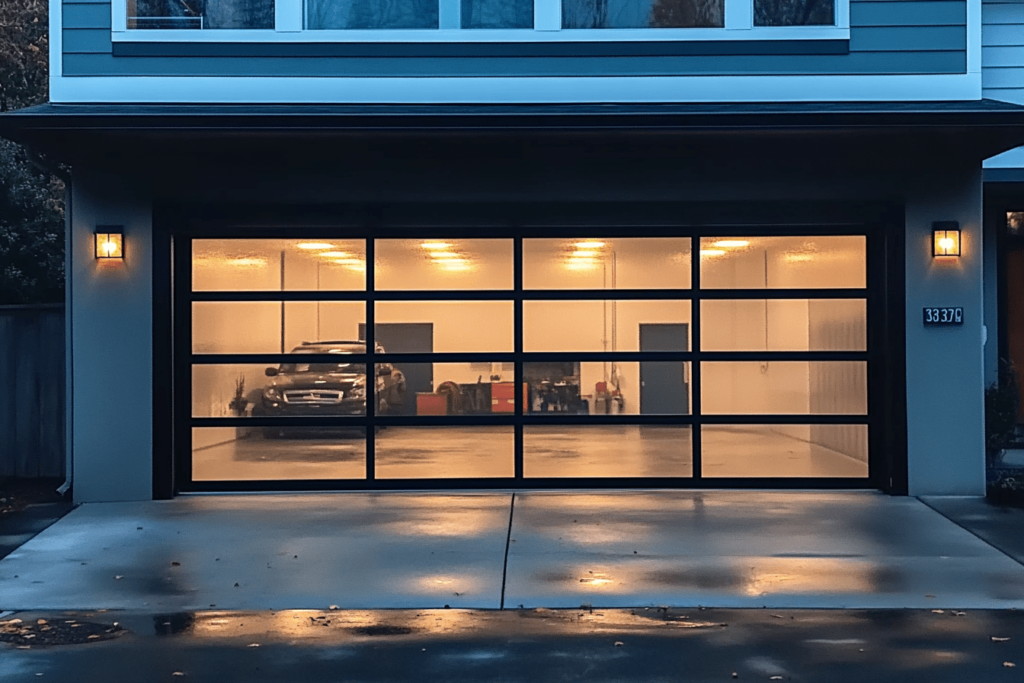
7. Slide-to-Side Garage Doors
A nod to early garage designs, these doors hug one wall and operate horizontally along a track. It’s one of the oldest garage door mechanism types, but still useful in specific modern setups.
They’re an excellent fit for garages with vaulted or obstructed ceilings.
Pros
- No overhead track
- Good for low ceilings
- Simple operation
Cons
- Needs a full side wall
- More niche and less widely available
8. Pivot Garage Doors
A lesser-known but unique type, pivot garage doors rotate on an axis instead of relying on overhead tracks or horizontal movement, offering a completely different opening experience.
The movement is smooth, and they work especially well in luxury settings where architectural flair takes priority.
Pros
- High-end, custom look
- Smooth swing
- No visible tracks
Cons
- Needs room to swing
- Expensive custom hardware
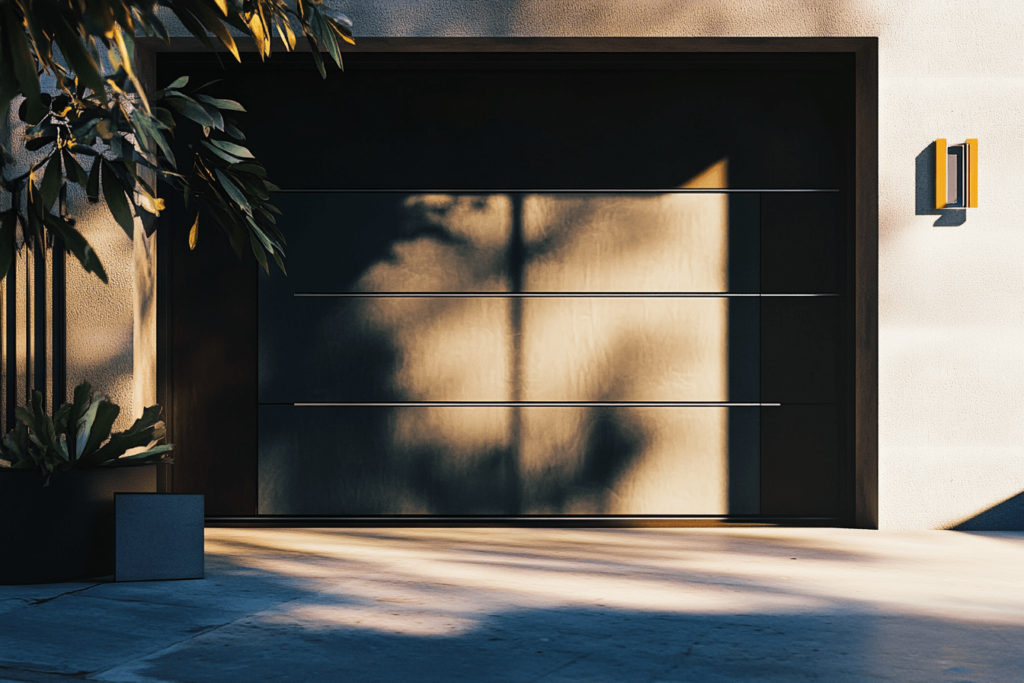
How to Choose the Right Garage Door?
Style & Aesthetic
Match the door to your home’s architecture. Modern homes? Go glass or sectional with clean lines.
Rustic or traditional? Side-hinged or carriage-style tilt-ups work better.
Insulation & Energy Efficiency
Live in a colder climate? Go for insulated sectional or roll-up doors. Look for a high R-value—anything over R-12 is solid.
Available Space
Low headroom? Avoid tilt-up or pivot styles. Consider a garage door that goes straight up like roll-ups. No side clearance? Skip side-hinged models.
Budget
Basic steel sectional doors cost around $750 installed. High-end glass and aluminum ones run upwards of $4,000. Set your range before shopping.
Automation & Smart Features
Most residential garage doors support openers. If you’re integrating with a smart home, check for Wi-Fi or app compatibility.
Maintenance
Want to set it and forget it? Avoid wood and complex pivot hardware. Opt for low-maintenance materials like aluminum or steel.
Still Comparing Tilt-Ups, Sliders & Sectionals?
Frequently Asked Questions
What type of door is a garage door with panels and tracks?
That’s called a sectional garage door. It’s the most common residential setup, ideal for automation and insulation.
What do you call doors that open in the middle?
Doors that open in the middle are called side-hinged garage doors. They’re great for traditional aesthetics and manual operation.
What kind of garage door do I have if it swings up in one piece?
If your garage door swings up in one piece, it’s either a tilt-up canopy or a tilt-up retractable garage door, depending on whether it fully retracts inside the garage.
Conclusion
Garage doors aren’t just about looks—they need to fit your space, match your home’s design, and work how you need them to, day in and day out.
Whether you’re after something sleek and modern or more classic and manual, the right pick comes down to a mix of style, function, and practicality. From sectionals to pivots, every type has its pros, but what matters most is choosing a setup you won’t second-guess later.
Not sure what works best for your home or garage layout? Book a free appointment with our team—we’ll help you get it sorted, from selection to installation.


